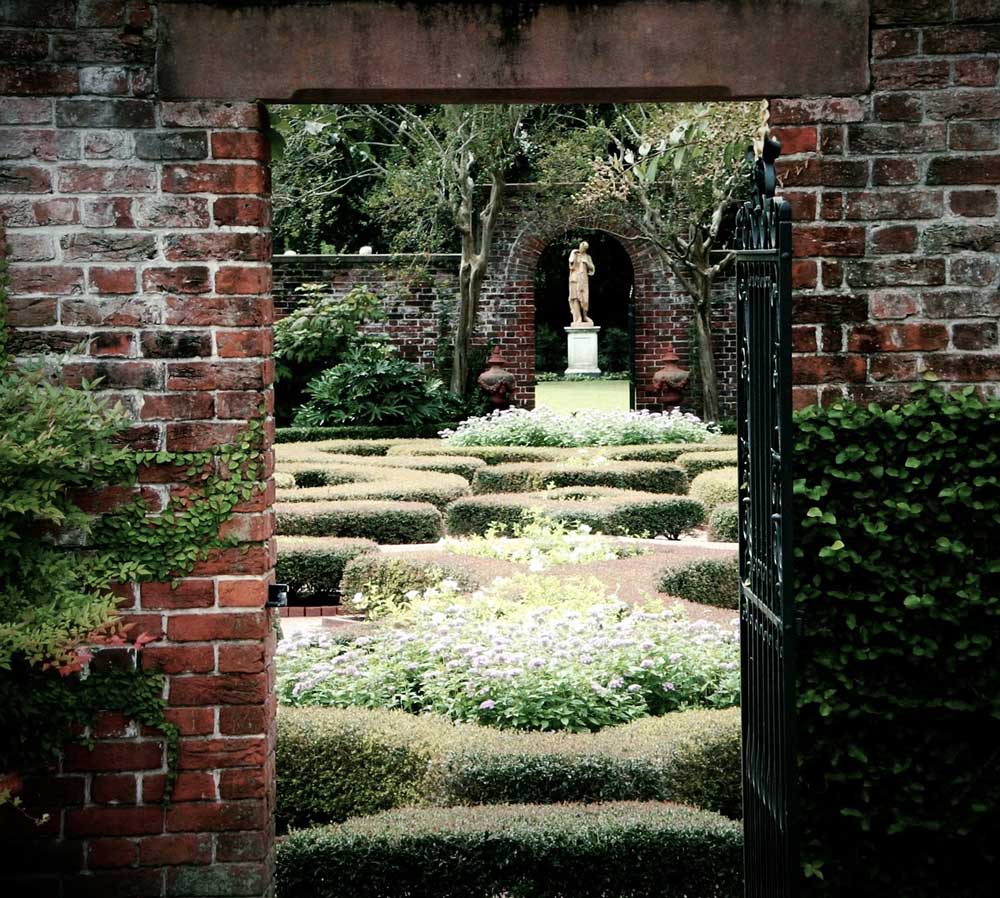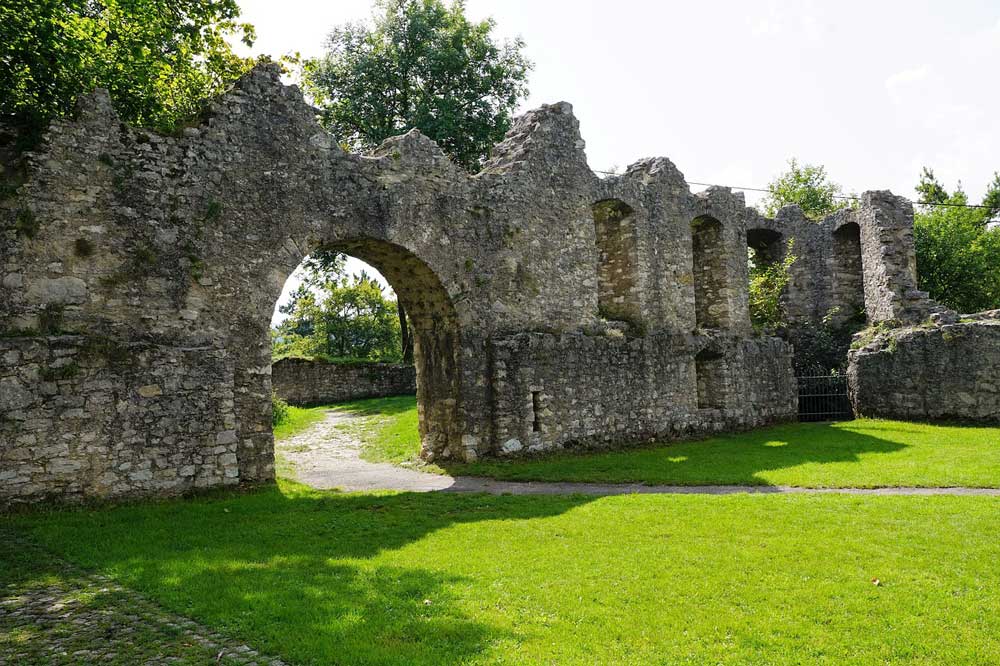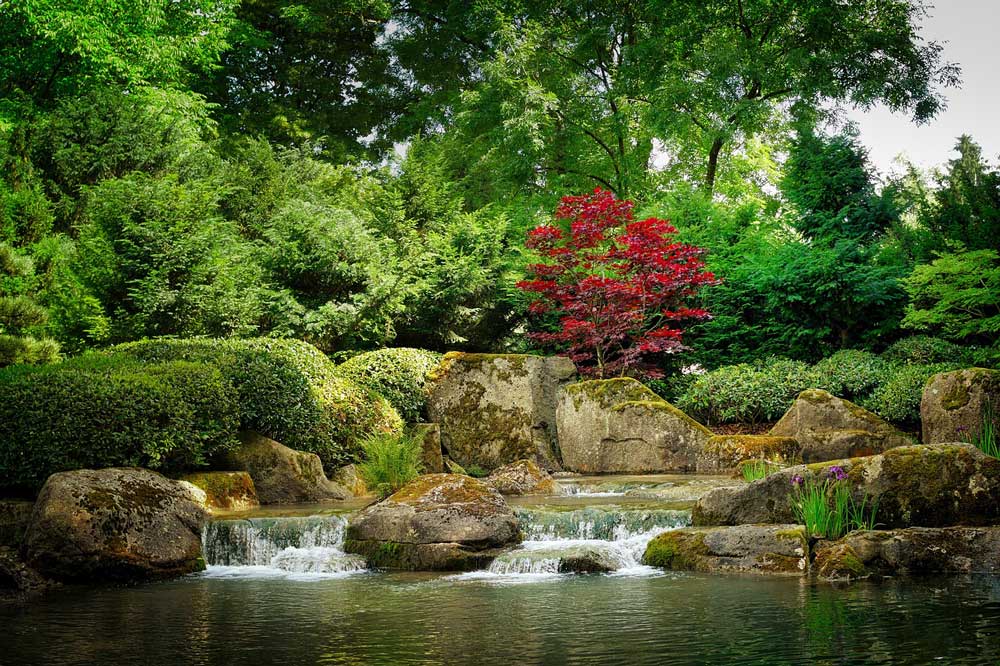Part 1: Garden design techniques
4. Focal point
A distant focal point can attract people in that direction as they want to move closer for a better view.

A focal point could be a statue, ornament or piece of art, or it could be a plant, tree, building or negative space such as an arch like in the example below.

Focal points can also distract from less desirable views such as unattractive buildings. A series of focal points in a view allows your eye to travel around a garden from one to the next, holding your interest. But too many focal points all crammed into a garden can create confusion for the eye as you don’t know which one to focus on, this can feel unsettling.
How do you feel about the focal points in the gardens below?


Stand in a garden, it could be your own garden, a public garden or a friend or family member’s garden. Turn slowly on the spot and notice what your eye lands on. You will notice that your eyes flick from focal point to focal point.
Some of the focal points will be appealing things such as a flower, a tree or a garden ornament.
Some of the focal points will be less appealing, an unattractive area of fence, a wheelie bin or a neighbour’s window overlooking the garden.
Now think about how you could improve the focal points for this space. Could you screen some of the less desirable views to stop them being an area of focus? Could you add any focal points to enhance views within the garden?
Repeat this process in the garden for each place you would spend time – each seating area and each view from a window or door.
